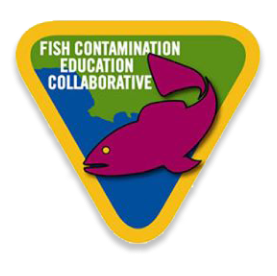EPA Consumption Study: Grilling Anglers on the Catches That They Grill
When talking to anglers, the first question a group like the EPA might ask is, “what are you catching?” While this is a great thing to know from an environmental perspective, when it comes to an angler’s health a more important follow-up question is “What are you eating?” and further, “How are you eating them?” These questions haven’t been asked seriously in nearly 20 years! Since the consumption of certain fish species in the Palos Verdes Shelf area can be a threat to public health, we have begun implementing a Consumption Study program. Judy Huang, EPA Program Manager, explains one of the most important outcomes of the consumption study is “to inform the public of risks associated from eating certain seafood originating from the Palos Verdes Shelf and be able to use this information as a tool to make informed choices about the food they cook and eat.”
 Over the course of the study (February 2012 – January 2013), six survey administrators are collecting stories from the diverse Southern California population between Santa Monica and Seal Beach in English, Spanish, Chinese, Tagalog and Vietnamese. For comprehensive data, the surveyors interview anglers one-on-one across all modes of fishing: Piers, jetties, beaches, intertidal zones, private boats, and fishing charters, over the course of a year to gather data during all seasons. Weekdays and weekends, rain or shine and with clipboards and educational props such as fish models in hand, our surveyors ask anglers questions about their fishing experience, knowledge of the DDT contamination off the PV Shelf and whether they have seen posted contamination warnings. If an angler has fish in his bucket, the surveyors ask to examine the fish along with asking a series of questions about the consumption of those particular fish.
Over the course of the study (February 2012 – January 2013), six survey administrators are collecting stories from the diverse Southern California population between Santa Monica and Seal Beach in English, Spanish, Chinese, Tagalog and Vietnamese. For comprehensive data, the surveyors interview anglers one-on-one across all modes of fishing: Piers, jetties, beaches, intertidal zones, private boats, and fishing charters, over the course of a year to gather data during all seasons. Weekdays and weekends, rain or shine and with clipboards and educational props such as fish models in hand, our surveyors ask anglers questions about their fishing experience, knowledge of the DDT contamination off the PV Shelf and whether they have seen posted contamination warnings. If an angler has fish in his bucket, the surveyors ask to examine the fish along with asking a series of questions about the consumption of those particular fish.
The information being gathered is crucial for us to best mitigate the risks to anglers from contaminated catches. The better we understand what seafood consumption habits currently are, and how well tactics have worked over the past 20 years, a more informed decision can be made about what should be adjusted in the future to create a healthier fishing experience for everyone.
What kinds of fish do you eat? And how do you prepare it? We’d love to know!

